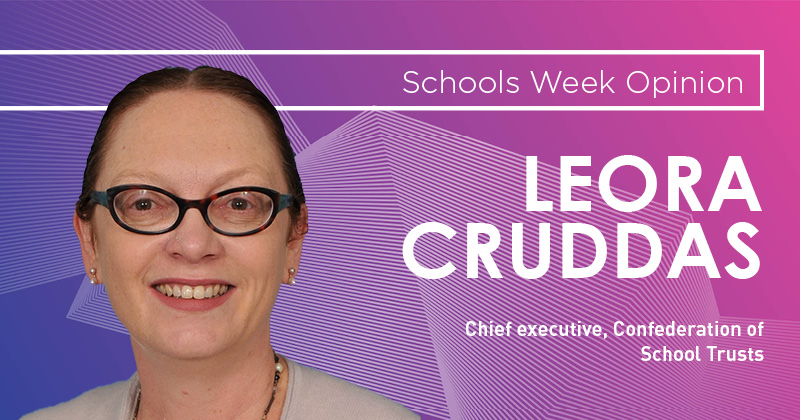We need to talk about pensions. I know they are not many people’s favourite subject, but the fact is they could hold the key to our recruitment and retention crisis.
That teacher pay has not kept pace with earnings growth in the wider economy and other graduate careers is a major factor in this crisis.
Since I started at United Learning in 2012, the top of the upper pay scale has increased by 26.6 per cent while inflation has been 41.5 per cent.
Over the same period, the last government focused on increasing starting salaries most, but even there the increase of 39 per cent is below inflation.
Academies have flexibility and United Learning makes the most of that. We pay more: our starting salaries of £32,850 (£39,000 in Inner London) are almost 10 per cent higher than standard pay and conditions.
But like everyone else, we are constrained by funding; we can’t go a lot further within the current settlement.
Meanwhile, the cost of employing a teacher has increased much more over the same period than pay has. The cost to the employer of a teacher on a standard starting salary has increased by 56 per cent, compared to that 39 per cent pay increase.
Why? Mainly because the employer now pays 28.68 per cent of salary into the Teachers Pension Scheme (TPS), compared to 14.1 per cent in 2012.
TPS remains an excellent scheme, offering extremely good retirement benefits. It is also very expensive and inflexible.
Alongside the doubled employer contribution, teacher contributions are up too (to between 7.4 per cent and 11.7 per cent of their salary).
An increasing proportion of a teacher’s total compensation package goes into pension but the retirement benefits are unchanged; they just cost more.
So teachers see no direct benefit from the increased cost to employers, while their pay has not kept pace with inflation or with earnings elsewhere.
Circumstances have changed too, affecting the relative value (especially to younger teachers) of pay now against benefits later. Increases in the retirement age have pushed those gold-plated retirement benefits further into the future, while younger teachers may be struggling with high housing and childcare costs today.
This isn’t a cost-saving measure for us. Teachers will simply have more choice
We know that some teachers already opt out of TPS due to the cost of the employee contributions and may have no pension provision. In fact, 10 per cent of teachers under the age of 40 in our academies opt out of the scheme, compared to 4 per cent of those over 40.
So next year we will offer teachers an alternative. Alongside the current deal, we will offer the choice of higher pay with a lower pension contribution into a ‘defined contribution’ scheme.
This isn’t a cost-saving measure. Teachers will have more choice to change the level of employee and employer contributions, but pay will increase if contributions are reduced. The total cost to us is the same either way.
With this approach, we could have offered starting salaries this year of almost £38,000 nationally or £45,000 in Inner London with a 10 per cent employer pension contribution (the minimum we would allow).
This is a very competitive graduate package (including in relation to pension) to attract people who might not have thought of teaching – and at no additional cost to us.
The effect on take-home pay is even more marked. For example, leaving aside student loans, the difference for a new teacher in Inner London could be a 24 per cent increase in net income, from around £29,000 now to around £36,000 on the new model.
Of course, a teacher might want different things at different points in their career, perhaps to increase contributions or to come into TPS later. So we will offer that flexibility to change contribution rates or move between schemes year by year.
But at the start of careers particularly, an extra 24 per cent could be the difference between affording a deposit on a house in a few years or not, between starting a family or not, and so between staying in teaching or not.
And for us, offering that alternative to good graduates who are currently thinking about private sector jobs (and who are less focused on retirement benefits they don’t expect to see until they’re 70 than on being able to afford housing now) might be the difference between attracting enough teachers as a system or not.











